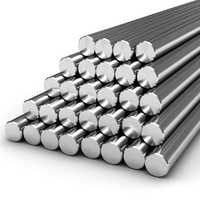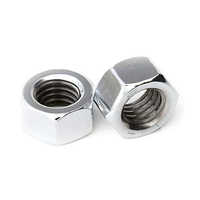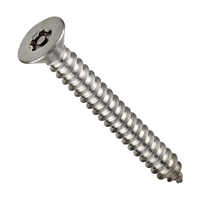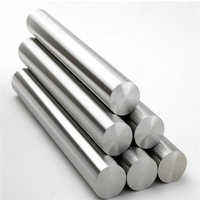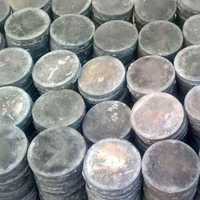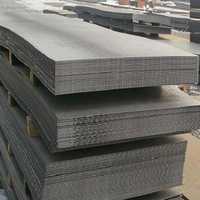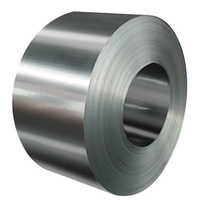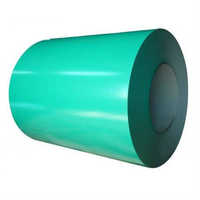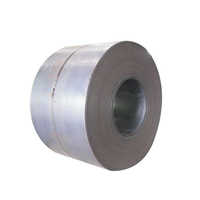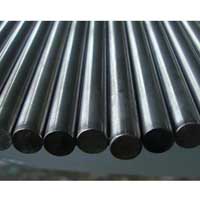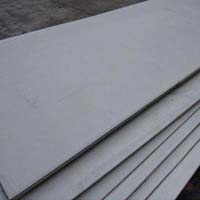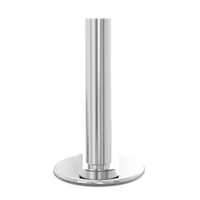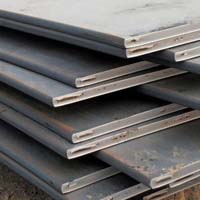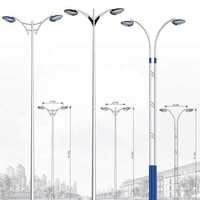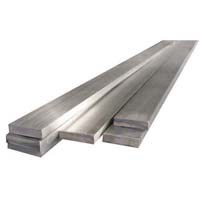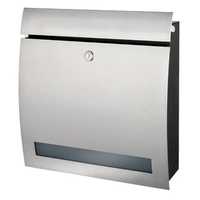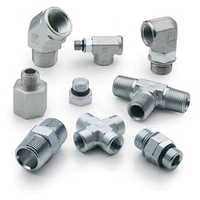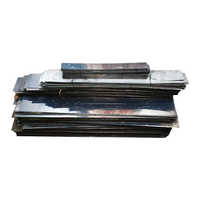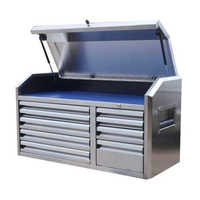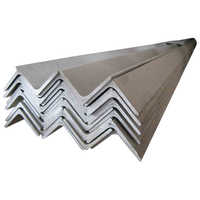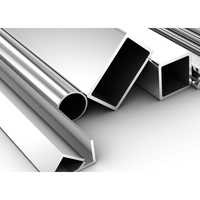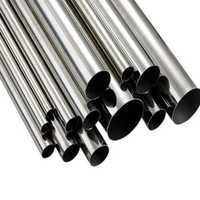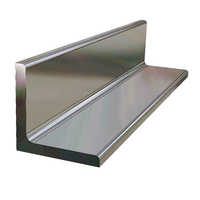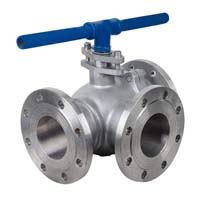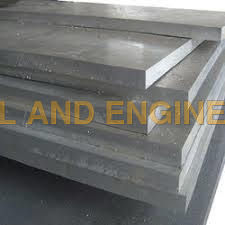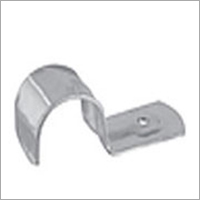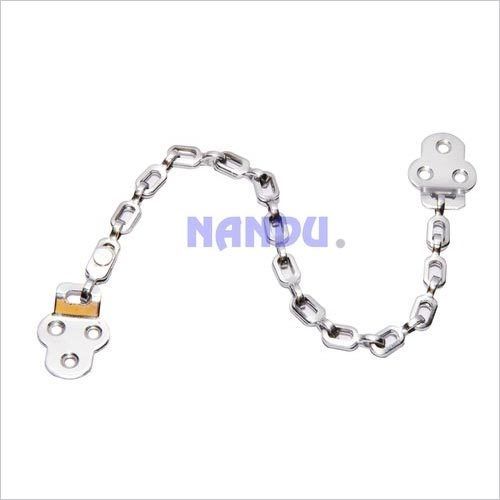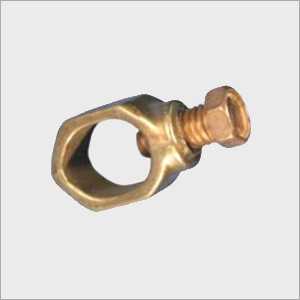Steel & Stainless Steel Products & Components
(21369 products)
Top Steel & Stainless Steel Products & Components Categories
Explore More Categories
Product Showcase
Cold Drawn Bright Bar
Price: 160 INR (Approx.)/Kilograms
MOQ - 100 Kilograms/Kilograms
22 Years
Business Type: Manufacturer | Supplier
NIKO STEEL AND ENGINEERING LLP
Hexagon Hex Ms Insert
Price Trend: 20.00 - 180.00 INR (Approx.)/Piece
MOQ - 100 Piece/Pieces
Type - Hex Insert
Connection - Female
Shape - Hexagon
10 Years
Business Type: Manufacturer | Exporter
SHALIBHADRA INTERNATIONAL
Made in India
Wire Rods Application: Construction
Steel Type - Stainless Steel
Steel Product Type - Other, Wire Rods
Surface - Hot Rolled
14 Years
Business Type: Manufacturer | Supplier
JINDAL ROLLING MILLS LTD.
Indian Inquiries Only
Industrial Stainless Steel Plates Application: Construction
Price: 400000.00 INR (Approx.)/Ton
MOQ - 1 Ton/Tons
Product Name - Stainless Steel Products
Steel Type - Stainless Steel
Steel Product Type - Steel Plates
3 Years
Business Type: Manufacturer | Distributor
JAYANT IMPEX PVT LTD
Made in India
Metallizing Wire
17 Years
Business Type: Manufacturer | Exporter
PRECISE ALLOYS PVT. LTD.
Steel Channels
9 Years
Business Type: Manufacturer | Supplier
ZARAL ELECTRICALS
Made in India
Stainless Steel H.R.Sheet
Price Trend: 195.00 - 250.00 INR (Approx.)/Kilograms
MOQ - 10 Kilograms/Kilograms
4 Years
Response Rate: 94.44%
Business Type: Manufacturer | Distributor
SHYAM METALS & ALLOYS
Indian Inquiries Only
High Speed Steel Flat Bar Application: Construction
Price: 900 INR (Approx.)/Kilograms
MOQ - 10 Kilograms/Kilograms
Color - Gray
Product Name - Other, Steel Flat Bar
Steel Product Type - Steel Bars
14 Years
Business Type: Distributor | Supplier
VISHAL STEEL INDUSTRIES
Indian Inquiries Only
SS Flat
Price Trend: 25000.00 - 35000.00 INR (Approx.)/Ton
MOQ - 17 Ton/Tons
8 Years
Business Type: Exporter
APOCALYPSE STEEL AND POWER LIMITED
Ms Beam Application: Construction
Price: 55000 INR (Approx.)/Metric Ton
MOQ - 100 Metric Ton/Metric Tons
Color - Black
Product Name - Steel Components
Steel Type - Mild Steel
5 Years
Response Rate: 79.38%
Business Type: Manufacturer
HICO MULTIFIN PRODUCTS PVT LTD
Indian Inquiries Only
Swaged Type Steel Tubular Pole
19 Years
Business Type: Manufacturer | Supplier
ELECTRO POLES PRODUCTS PVT. LTD.
Silver 904L Stainless Steel Plate
Price: 1000 INR (Approx.)/Kilograms
MOQ - 100 Kilograms/Kilograms
Color - Silver
Product Name - Steel
Steel Type - Stainless Steel
3 Years
Business Type: Manufacturer | Distributor
SALEM STAINLESS STEEL SUPPLIERS PRIVATE LIMITED
Indian Inquiries Only
Made in India
Industrial Deformed Steel Bars
MOQ - 16 Ton/Tons
6 Years
Business Type: Manufacturer | Exporter
NIRMAL WIRES (P) LTD.
Made in India
SS304 SS Weights E2 Class 50KG
Price: 95000 INR (Approx.)/Piece
MOQ - 5 Piece/Pieces
Color - Grey
Size - 50 kg
Product Type - SS Weights
10 Years
Response Rate: 94.62%
Business Type: Manufacturer | Distributor
SIMANDHAR TECHNOLOGY
Made in India
Easy To Use Fabricated Covers
Price Trend: 1000.00 - 3500.00 INR (Approx.)/Piece
MOQ - 200 Piece/Pieces
Product Type - Cover
Main Material - Steel
Surface Treatment - Polished
11 Years
Business Type: Manufacturer | Exporter
BINAYAK HI TECH ENGINEERING PVT. LTD.
Made in India
Street Light Pole
Price: 5000 INR (Approx.)/Piece
MOQ - 1 Piece/Pieces
15 Years
Business Type: Manufacturer | Distributor
ELECTROMAC INDUSTRIES
Made in India
Robust Ms Strip
9 Years
Response Rate: 70.42%
Business Type: Manufacturer | Distributor
SMART PACKAGING SYSTEM
Indian Inquiries Only
Made in India
Towers And Catwalks, Storage Material: Grains, Cement
2 Years
Business Type: Manufacturer | Exporter
KRISHNA GRAIN SYSTEMS PVT. LTD.
Made in India
Cold Work Tool Steel Rods - Color: Silver
Price: 200 INR (Approx.)/Kilograms
MOQ - 100 Kilograms/Kilograms
Product Name - Other, Cold Work Tool Steel Rods
Steel Product Type - Other, Steel Rods
Shape - Bar
8 Years
Business Type: Manufacturer | Supplier
VENTURA ALLOY AND STEELS PRIVATE LIMITED
Made in India
Galvanised Iron Decking Sheet Application: Construction
Price: 85 INR (Approx.)/Kilograms
MOQ - 100 Kilograms/Kilograms
Grade - Industrial
Surface - Polished
Application - Construction
6 Years
Business Type: Manufacturer | Distributor
SHIVA STEEL FABRICATOR
Made in India
4Mm Thick Rust Proof Stainless Steel Hot Rolled Rectangular Chequered Plate Application: Construction
Price: 67 INR (Approx.)/Kilograms
MOQ - 2500 Kilograms/Kilograms
Product Name - Stainless Steel Products
Steel Type - Stainless Steel
Steel Product Type - Other
2 Years
Business Type: Distributor | Trading Company
Anjani Steel
Indian Inquiries Only
Made in India
S S Channel Grade: First Class
Price Trend: 250.00 - 550.00 INR (Approx.)/Kilograms
MOQ - 100 Kilograms/Kilograms
Steel Type - Stainless Steel
Grade - First Class
Steel Standard - AISI
2 Years
Business Type: Manufacturer | Supplier
REGENCY IMPEX (INDIA)
Made in India
Telescopic Guard
Price: 3500 INR (Approx.)/Unit
MOQ - 1 Unit/Units
5 Years
Business Type: Manufacturer | Exporter
BACKLER INDIA PRIVATE LIMITED
Made in India
Perforated Stainless Steel
4 Years
Business Type: Exporter | Trading Company
MEDUSA EXIM
Verified Exporter
( Accepts only Foreign Inquiry)
Made in India
Plate Stainless Steel Sheet
Price: 200 INR (Approx.)/Kilograms
MOQ - 1 Kilograms/Kilograms
Product Name - Stainless Steel Products
Steel Type - Stainless Steel
Steel Product Type - Steel Sheets
6 Years
Business Type: Manufacturer | Distributor
SHREE RAJLAXMI FORGE
Made in India
Stainless Steel 904L Sheets Application: Construction
Price: 760 INR (Approx.)/Kilograms
MOQ - 500 Kilograms/Kilograms
Color - Silver
Product Name - Stainless Steel Products
Steel Type - Stainless Steel
3 Years
Business Type: Manufacturer | Supplier
BHAVYA STAINLESS PRIVATE LIMITED
Verified Exporter
( Accepts only Foreign Inquiry)
Made in India
Iron Book shelf
Price: 9500 INR (Approx.)/Piece
MOQ - 1 Piece/Pieces
3 Years
Business Type: Manufacturer | Service Provider
S K STEEL PRODUCTS
Indian Inquiries Only
Made in India
Stainless Steel Inconel Bar
Price: 2200 INR (Approx.)/Kilograms
MOQ - 1000 Kilograms/Kilograms
Product Name - Stainless Steel Products
Steel Type - Stainless Steel
Steel Product Type - Steel Bars
3 Years
Business Type: Supplier | Exporter
SIDDHIVINAYAK METAL INDUSTRIES
Steel & Stainless Steel Products & Components Manufacturers | Suppliers in India
| Company Name | Location | Member Since |
|---|---|---|
| Niko Steel And Engineering Llp | Mumbai, India | 22 Years |
| Electro Poles Products Pvt. Ltd. | Kolkata, India | 19 Years |
| Precise Alloys Pvt. Ltd. | Mumbai, India | 17 Years |
| Electromac Industries | Mumbai, India | 15 Years |
| Jindal Rolling Mills Ltd. | New Delhi, India | 14 Years |
| Vishal Steel Industries | Mumbai, India | 14 Years |
| Binayak Hi Tech Engineering Pvt. Ltd. | Howrah, India | 11 Years |
| Shalibhadra International | Jamnagar, India | 10 Years |
| Simandhar Technology | Ahmedabad, India | 10 Years |
| Zaral Electricals | Vadodara, India | 9 Years |
What are steel products?
Types of steel products
Uses & Benefits of Steel Products
What Are the Products of Steel?
- computers
- sports goods
- home appliances
- emergency stairways
- saucepans
- cutlery
- radiators
- kitchen sink cabinets
- Scissors
- Paper clips
- Scalpels
- suture needles
- hip implants
- surgical pins
- rollers
- pipelines
- machinerieses
- overhead cranes
- Drills
- Rushers
- Drills
- Saws
- Lathes
- Cylinder blocks
- Press tools
- sculptures
- jewelryry
- trains
- steel barriers for road safety
- high-voltage pylons
- bridges
- fences
- bicycles
- trains
- trucks
- automobiles
- reinforcing steel
- metal roofing
- steel beams
- mounting brackets
FAQs: Steel Products
Related Categories
Aluminium & Foils
Aluminium Scrap
Aluminum & Aluminum Products
Asbestos Products
Base Metals & Articles
Bentonite Products
Bronze
Bullion-Gold & Silver
CI Castings
Cast Products & Equipment
Copper Products
Copper Scrap
Diamonds
Diamonds-Polished
Ferroalloy Products
Ferrous & Non-ferrous Metal
Forged Products & Equipment
HMS Scrap
Ingot
Investment Castings
Iron & Steel
Iron & Steel Castings
Iron Scrap
Lead & Articles Thereof
Lead Scrap
Magnets & Magnetic Devices
Metal Mineral
Metal Products & Powder
Metal Scrap
Metal Stocks
Metals & Alloys
Mica
Minerals & Refractories
Nickel Alloy
Non-ferrous Metal Alloy
Non-ferrous Metal Products
Non-metallic Mineral Deposit
Non-metallic Mineral Products
Pressure Die Castings
Ramming Mass
Sand Castings
Scrap
Shell Mould Castings
Steel & Stainless Steel Products & Components
Steel Balls
Steel Components
Steel Re-rollers
Steel Scrap
Wire Mesh
Wire Ropes
Zinc Products
Zinc Scrap
